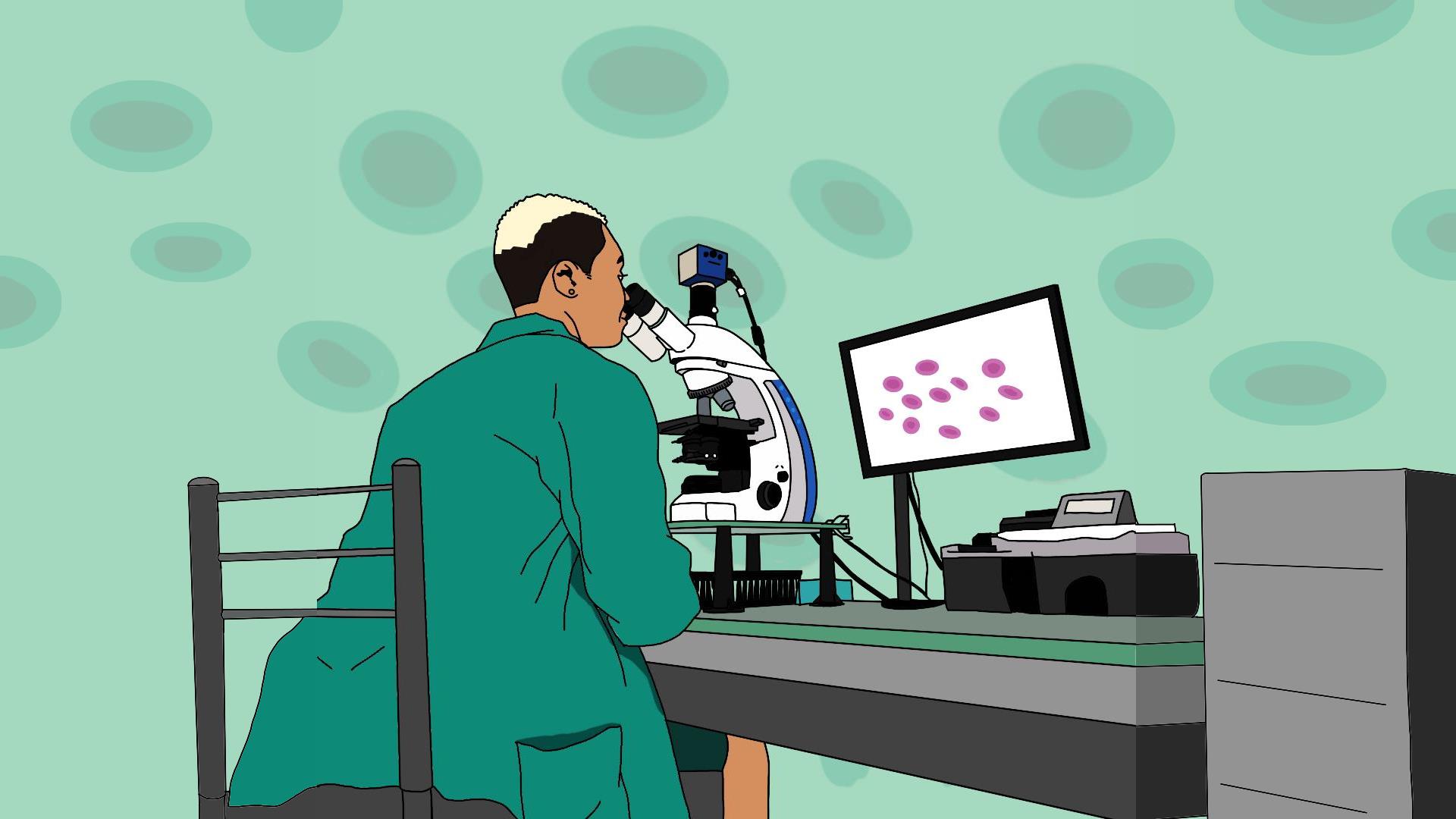🎧 Listen to: Blood Cell Disorders (s)

Blood Cell Disorders
What is blood cell disorders?
Blood cell disorders happen when there’s something wrong with the red blood cells, white blood cells, or platelets in your blood.
What’s happening in your blood?
Your blood has three types of cells:
- Red blood cells: Carry oxygen.
- White blood cells: Fight infections.
- Platelets: Help stop bleeding.
When any of these cells don’t work as they should, it leads to a blood cell disorder.
What happens when things go wrong?
Depending on which cells are misbehaving, blood cell disorders can cause:
- Fatigue
- Frequent infections
- Easy bruising and bleeding
Common blood cell disorders?
- Anemia: You don’t have enough red blood cells or iron. This means your body can’t get enough oxygen, so you feel tired, weak, and dizzy.
- Sickle cell: the red blood cells change shape and block blood flow, causing pain and damage to organs. This is common in many African communities.
- Leukemia & lymphoma: These are cancers of the white blood cells, making your body’s defense system go haywire.
- Platelet issues: Either too many platelets (clots forming where they shouldn’t) or too few (leading to excessive bleeding).
How do you find out?
Doctors will usually do a blood test and may take a little sample from your bone marrow to see what’s happening inside.
What’s the treatment?
Treatment depends on the disorder and may include:
- Medications to balance your blood cells.
- Blood transfusions to boost your blood levels.
- Bone marrow transplants in severe cases.
